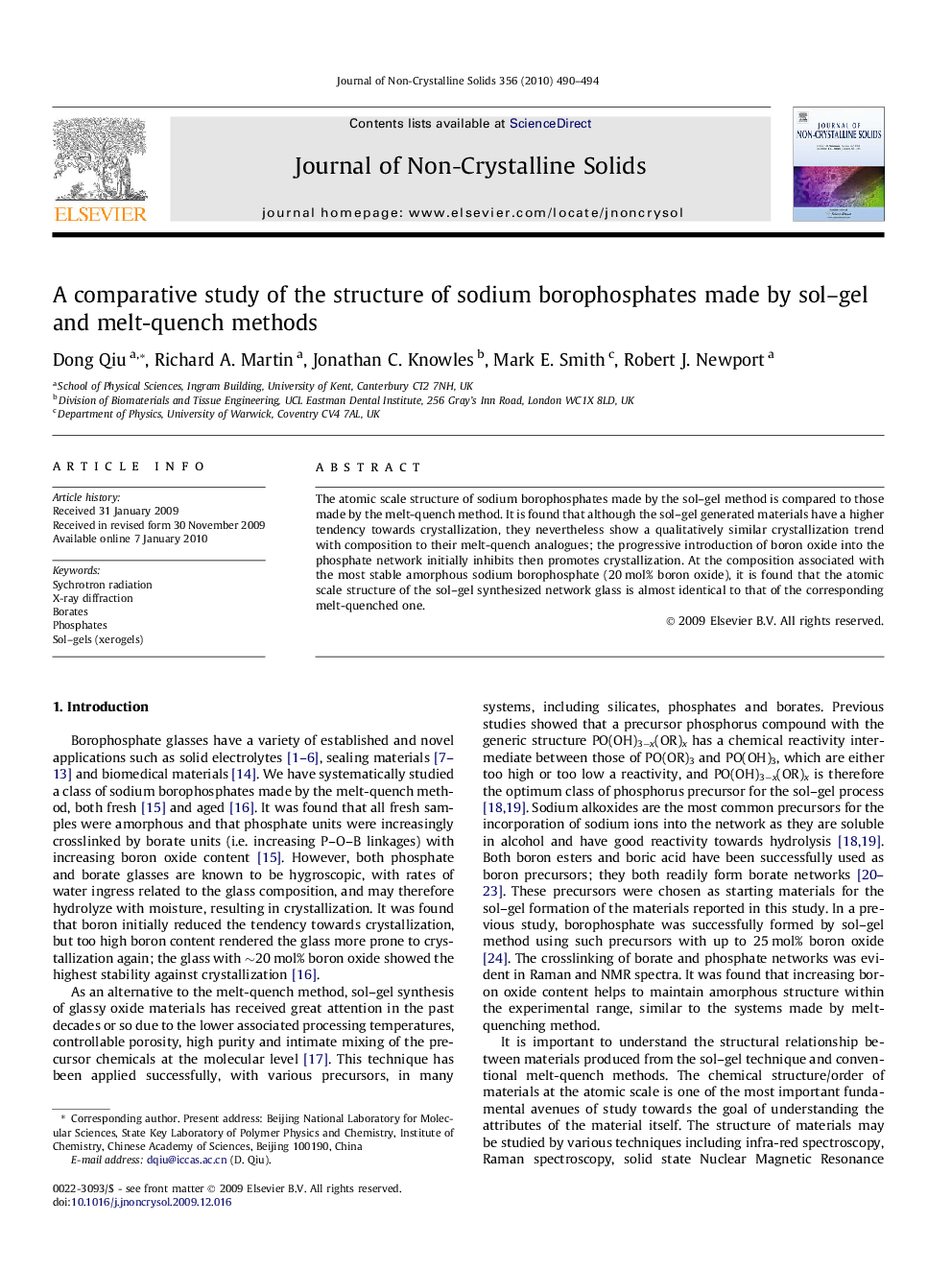| Article ID | Journal | Published Year | Pages | File Type |
|---|---|---|---|---|
| 1482827 | Journal of Non-Crystalline Solids | 2010 | 5 Pages |
Abstract
The atomic scale structure of sodium borophosphates made by the sol–gel method is compared to those made by the melt-quench method. It is found that although the sol–gel generated materials have a higher tendency towards crystallization, they nevertheless show a qualitatively similar crystallization trend with composition to their melt-quench analogues; the progressive introduction of boron oxide into the phosphate network initially inhibits then promotes crystallization. At the composition associated with the most stable amorphous sodium borophosphate (20 mol% boron oxide), it is found that the atomic scale structure of the sol–gel synthesized network glass is almost identical to that of the corresponding melt-quenched one.
Related Topics
Physical Sciences and Engineering
Materials Science
Ceramics and Composites
Authors
Dong Qiu, Richard A. Martin, Jonathan C. Knowles, Mark E. Smith, Robert J. Newport,
